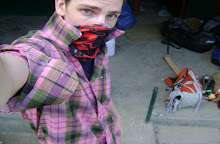treachery of photography
In the second photo journalism we covered the decpetion hidden within photography. It didn't take long for people to find ways of airbrushing people out of photos if they were unneeded or had fallen out with them since the picture was taken, since the 1860's. Two famous figures throughout recent history who have used photo manipulation fairly early on in the arts development; Hitler and Mussolini to both cut out poeple they had fallen out wih or to pass over the message of power, by airbrushing out the figure holding a horse by the reigns to decieve the country into thinking Mussolini was powerful, dominate and in control.
Essentially changing events in history to get the result which best pleases the situation. After a very famous picture taken during Viatnam as a man is executed in the streets,governments employed very strict photography restriction, banning the Media from showing the true reality of war, as photographers were accused of showing too much of the reality of war.
Photos have always been easily reuseed and manipulated to suit the different contexts a picture may be applied to, to mean and represent anything once taken,- detaching the moment from the reality it was taken from. Sound and context now irrelevent and non existant, become a snap shot of an event; not the event itself.
This was explored in a practical task, given different close up, cropped images and noting the connotation and denotations before rrevealing the full image.
With the cropped image showing a collpased building and a Soldier holding a gun, the connotations and denotations developed suggested a bombed building within a war zone - most likely Iraq or Afhganistan. Once the entire image had been revealed, it became more clear from the position of the collapsed building, that this ould not have come from a bomb blast, hut rather a natural disaster - More specifically the recent earthquake in Italy. Italian soldiers are required to carry a fire weapon on them at all times, explaining the gun in a seemingly unnecassary circumstance.
Wednesday 29 April 2009
Wednesday 22 April 2009
Photography Lesson 1 Summary
In the first lesson on photography we covered the basic history of the art. Beginning with the idea of the camera obscurer; projecting an image through a small hole allowing a reverted image of whatever happens to be on otherside onto the wall.
- Henry Fox Talbot creates positive and negative images and has a hand in the inspiration for the creation of the 1839 Daguerreotype, creating the first real, permanantly placed picture exposed onto a mirrored surface.
- 1840 - The first photographic camera
- 1888 - First Kodak Roll Film
- 1913 - The first leica camera
- 1975 - The first digital camera
In the second section of the lesson we were introduced to the Sim Cam, allowing us to play around the Appertures and F-stops on the camera shutter, experimenting with different levels of light exposer and how these effected the overall quality of the final image.
The basic concept of the F-stop can be confusing as they are reversed. The smaller the Aperture the higher the F-stop and the higher the Aperture the lower the F-stop, allowing different levels of light
Subscribe to:
Posts (Atom)
